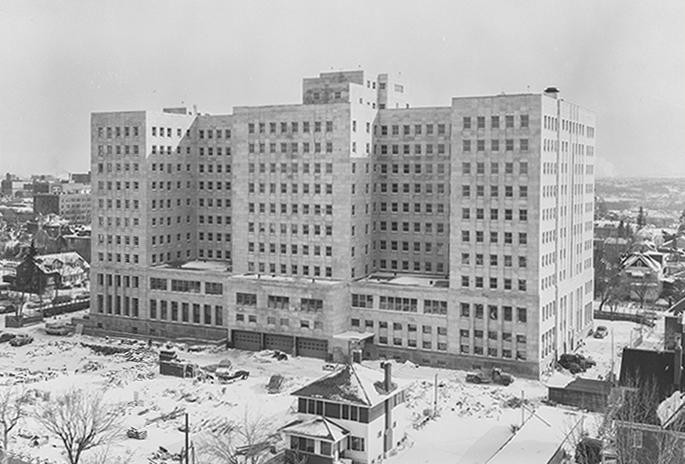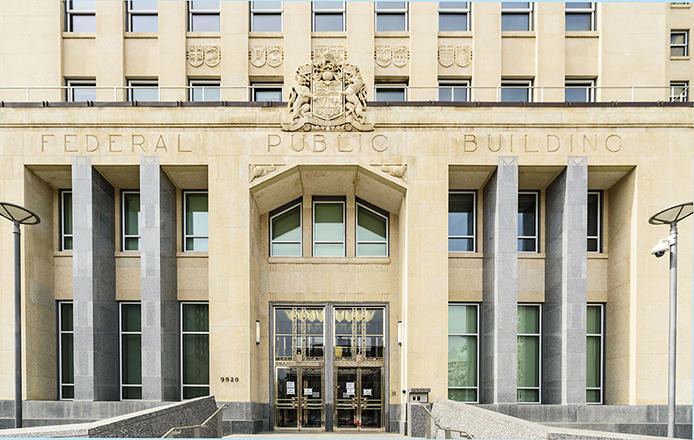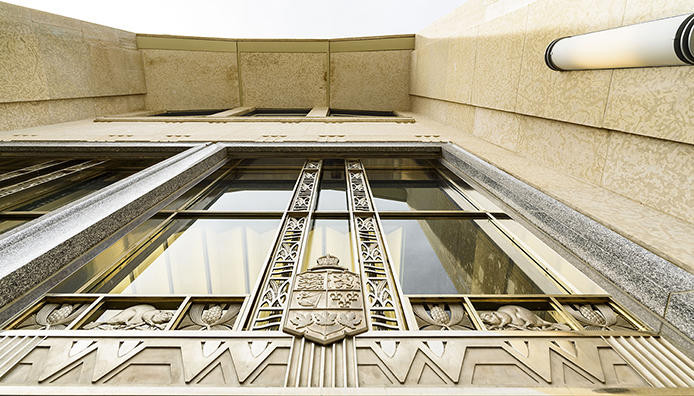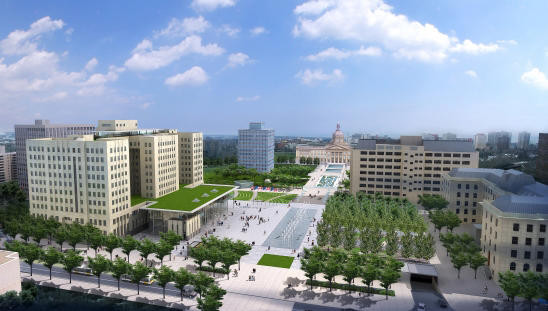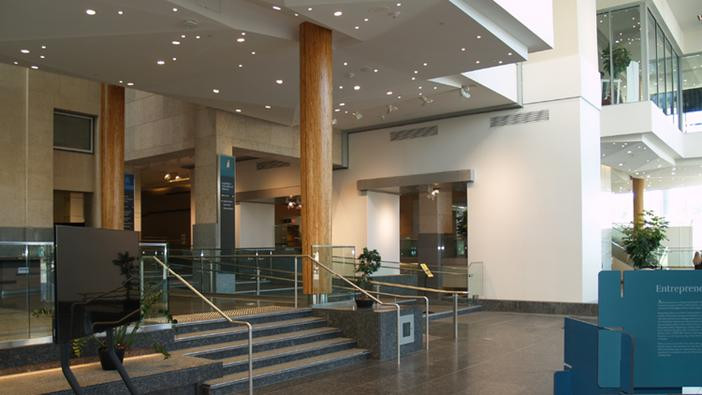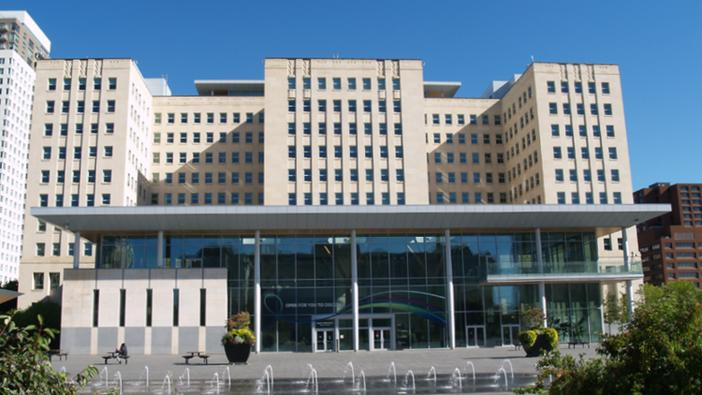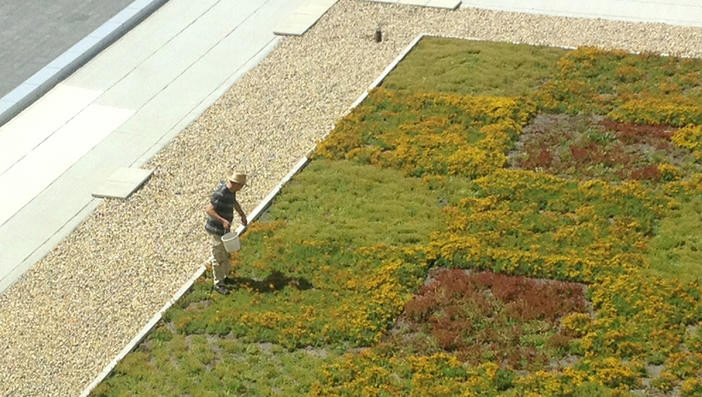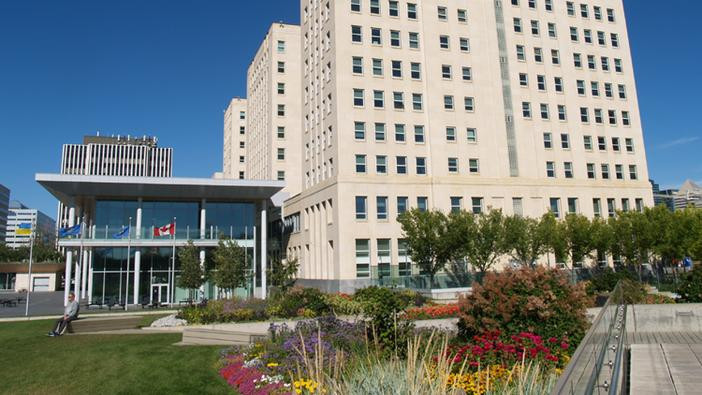Government mail service may be affected by the Canada Post labour disruption. Learn about how critical government mail will be handled.
Changing the name in honour of the Queen
On August 5, 2022, the Government of Alberta was granted permission by Buckingham Palace to change the name of the Edmonton Federal Building to the Queen Elizabeth II Building.
Changing the name was originally intended to celebrate the Queen’s Platinum Jubilee, marking 70 years of service to the people of the United Kingdom, the Realms, and the Commonwealth.
With the passing of Her late Majesty Queen Elizabeth II on September 8, 2022, renaming the building serves as a tribute to the life and historic reign of the Queen by making her name a permanent fixture on Alberta’s Legislature grounds.
Building facts
- Construction completed: 1958
- Gross floor area: 33,000 sq. m.
- Usable office space: 23,000 sq. m.
- Site area: 1.04 hectares
- Number of floors: 11
Uses over the years
Owned by the Alberta government, the Queen Elizabeth II Building sits in the northeast corner of downtown Edmonton’s provincial government precinct.
The building was constructed by the Government of Canada to host its main federal offices for Edmonton and much of Western Canada. It was first proposed in the 1930s as a much smaller building. However the Great Depression and the Second World War caused a construction delay until 1955. By 1955 government responsibility had grown and the Queen Elizabeth II Building plans doubled in size.
Architectural details
Symbols carved in the building tell a story of Edmonton. The words FEDERAL PUBLIC BUILDING (soon to be Queen Elizabeth II Building) are carved into stone above the east entrance of the building. Above the engraving is a large stone picture of Canada’s Royal Arms. Nearby on the front stones are shields of each of Canada’s 10 provinces. This decoration shows the building was previously the Government of Canada’s Edmonton office for 30 years.
2010-2015 renewal project
The building was empty for 20 years. In 2010 the province began construction which was largely completed by the end of November 2014. The first of over 600 government and Legislature staff and MLAs moved into their new offices in February 2015. That summer the plaza now known as Violet King Henry Plaza was completed. The main floor Legislative Assembly Visitor Centre opened on Canada Day 2015. The visitor centre is open year-round and has a gift shop, exhibition spaces and 80-seat theatre.
